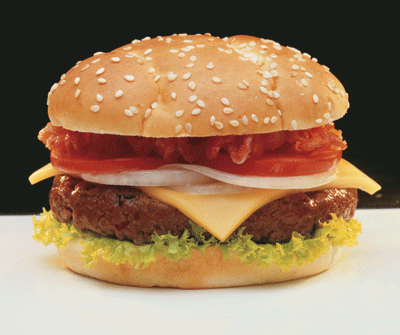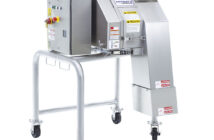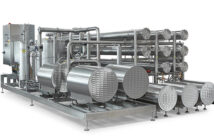By Natasha Telles D’Costa, research manager, New Zealand GIC, Frost & Sullivan
Shakespeare famously wrote – “if music be the food of love, play on” and no industry has had consumers dancing to their tune more than the fast food sector. However, with the rise of the economic crisis, dipping disposable incomes and increasing concerns on nutritional content of fast food products, the fast food industry has taken a huge hit.
While globally emerging areas such as China, the Middle East and India continue to spur growth for fast food chains, developed nations have had to adapt and adopt new strategies to maintain competency and profitability.
Global fast food industry – rise of the developing world
While for centuries the west has dominated the world’s food markets, today a new ‘big spender’ has taken over – namely Asia Pacific. As Asian economies emerge as the flag bearers of a struggling global economy the entire western world looks to this region to buoy their sagging economic situations.
In no industry has this been more apparent than in that of the food service industry. Encompassing a region that accounts for over a third of the world’s population and two of its most populous nations (China and India) it is indeed surprising that the industry has taken as long as it has to focus on this region. In 2013 the global food service industry is estimated at $US2.5 trillion with Asia Pacific accounting for the largest share of the market at $US1.1 trillion.
Fast food accounts for the leading segment within this market growing at explosive rates across Asia Pacific. Quick service restaurants are the key growth engine for the fast food sector and account for over 70 percent of overall fast food sales in 2013.
An emerging market segment within fast food is that of food kiosks – a product of the global recession in the west but a key cultural method of food retailing in Asia Pacific. As the Asia Pacific population becomes increasingly affluent, increased demand is also expected to arise from the restaurant and catering businesses as Asian consumers show a definitive willingness to pay for quality. The rising nouveau riche populations of both China and India are expected to be key growth drivers of this sector.
The Kiwi fast food experience
Though part of the overall Asia Pacific region, New Zealand, along with Australia, is classified as a more mature fast food market. However, the overall fast food consumption is extremely high in correspondence with its small population. In 2013, New Zealand’s fast food consumption was estimated at an average of 2-3kgs of fast food per person per year, amounting to a per person expenditure of over $US1200-1500 per person per year (based on an average eating out rate of thrice a week). While multinationals such as McDonald’s and Restaurant Brands (consists of chains of Pizza Hut, Carl’s Jr, Starbucks and KFC) dominated the local fast food market, a large section of the market caters to the unorganised local fish and chip shops.
With the ever increasing Asian immigration into New Zealand, an emerging demand area is that of Asian street food – especially in the urbanised regions of the country.
There are certain key trends that are affecting fast food demand in New Zealand today, these include:
a) Health and wellness trends in fast food – with over 3000 organised fast food outlets across the country, the New Zealand fast food market is now facing intense scrutiny over its need to provide healthier options. As fast food manufacturers are faced with constant price pressure there is an equal stimulus to provide healthy fast food options in order to retain consumer loyalty. While most fast food manufacturers today offer ‘healthy’ variants, the products are, in general, viewed with scepticism. The pressure to provide cost-effective healthy options is immense and often unviable for such enterprises as more and more chains offer meals for as low as $1 ($US 0.8). However, going healthy is currently the only successful way out for an industry that will otherwise ultimately face stagnation, especially as obesity and cardio vascular disease incidences rise in New Zealand. The importance of this trend is already apparent as almost all fast food chains have healthy variants. One such example is the McDonald’s Weight Watcher co-branding venture. MacDonald’s New Zealand in 2010 became one of the first fast food giants globally to tie up with the highly acclaimed Weight Watchers programme. Three meal combinations are available based on Weight Watchers Points – a proprietary calculation based on a food’s calories, fat and fibre content
b) Focusing on local produce – as fast food chains aim to capture local flavours and go ethnic in order to woo the ever changing fast food consumer, the local trend has emerged as the biggest cash cow for this industry. The introduction of products that use local produce has been seen as a key driver of this trend as consumers feel that their purchases directly benefit the Kiwi agricultural and livestock society. One such example was the introduction of the classic lamb burger. Burger Fuel, for instance, provides a lamb burger with 100 per cent NZ lamb, with kiwifruit and aioli amongst other options. All three of these ingredients in addition to a side of kumara chips are considered ‘kiwiana’ and are a key reason why this indigenous organisation has grown from strength to strength by providing local ingredients in an international format
c) Influencing the youth – with strong branding and low cost options, fast food chains have chosen to appeal to the most lucrative segment of the population – that of the youth. As more and more New Zealanders move to larger cities to work and study, the fast food sector has cashed in on these young people as a key consumer segment. Additionally, as a key employer for students (McDonald’s New Zealand is the country’s largest youth employer) the company has chosen to keep its customers close to its core and thereby ensuring that a large portion of its customers are from its employees itself. This focus on the younger population and constant reduction of prices to cater to students and young people on a budget has proven to be a high volume market for fast food chains and will continue to be one of its major growth drivers over the years to come
As global fast food growth slows and even recedes in countries such as the USA and Germany, the developed world will be called upon to utilise all its innovative strategies to continue growing. However, the key to such success lies in the three strategies of local portfolio adaptation, raw material relationships and supply chain excellence. As is evident, the companies that have succeeded in this market are those that have viewed New Zealand in the multiple facets that this region comprises of and have understood the cultural and physical challenges that New Zealand offers. It is such a strategy that will propel manufacturers from being just another western import to becoming synonymous with Kiwi life as brands such as KFC and McDonald’s have managed to become. With global concerns about food safety and increasing health worries over nutritional value and food hygiene; not to mention aggressive internal competition, the food service industry stands poised at its biggest challenge yet and it is only a strong local understanding and catering to consumer needs that will allow even this challenge to turn into a profitable opportunity for the New Zealand fast food industry and enable it to flourish in the years to come.





























































































